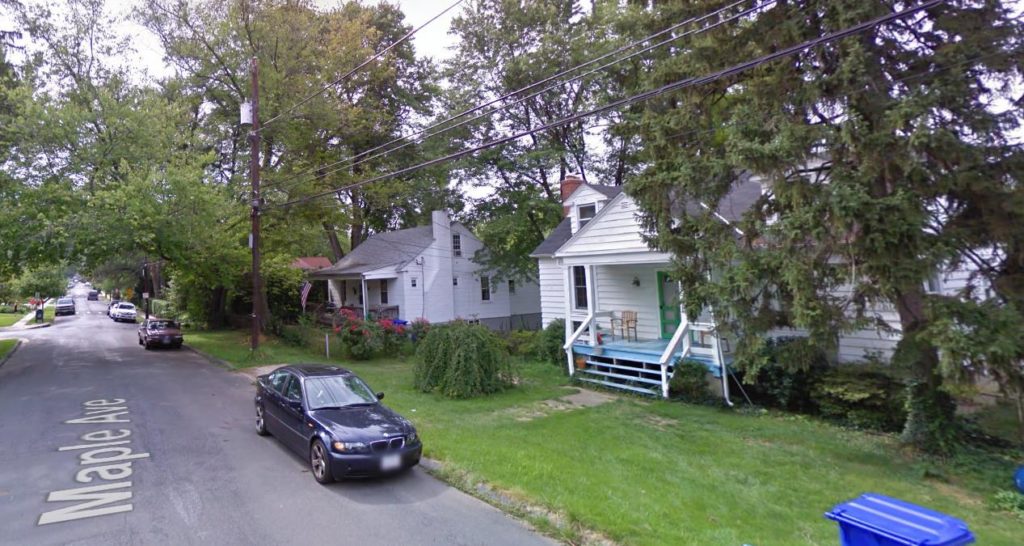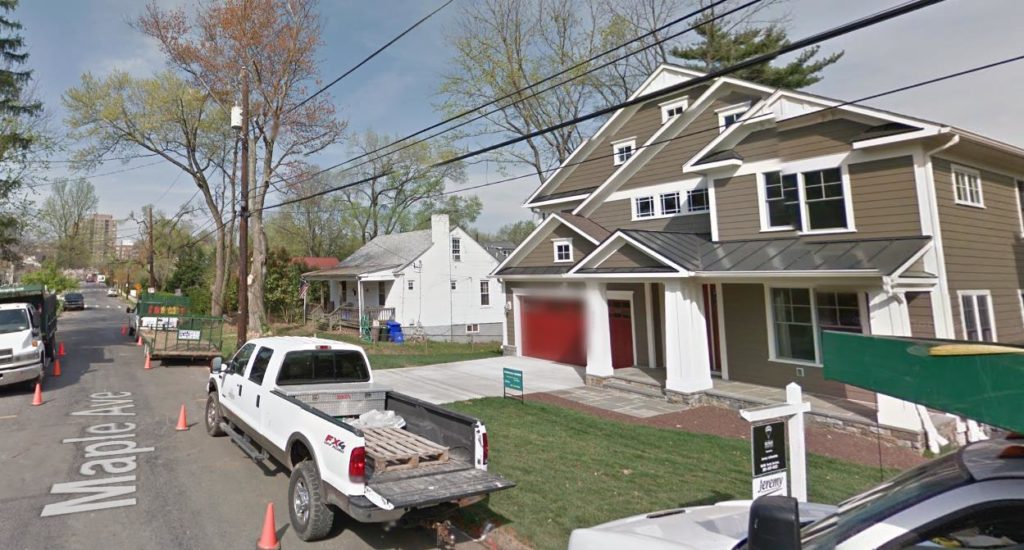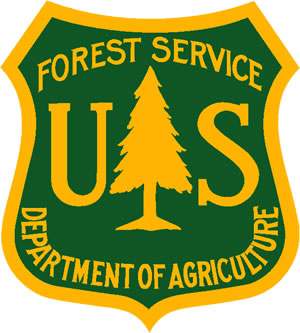Adjacent to Washington D.C., Montgomery County is Maryland’s most populous county. Its large population supports a demanding and competitive housing market, which over the past two decades has fostered a trend in residential lot redevelopment. The state Forest Conservation Law helps slow the loss of forests during development, but it generally applies to development activity on tracts of land larger than an acre and does not address the loss of tree canopy during infill and redevelopment on small parcels. In response to the challenge of protecting canopy loss during redevelopment projects, the Montgomery County Department of Environmental Protection (DEP) led an eight-year stakeholder process that resulted in the Tree Canopy Law in 2014. In the same year, Montgomery County also developed the county Roadside Tree Protection Law. These two laws, in addition to the Forest Conservation Law, are important tools to enhance tree canopy, reduce canopy loss, and mitigate for environmental impacts of development.
-

Street view of lot prior to redevelopment. Note the abundance of mature trees in both the right-of-way and on the parcel itself. -

In 2011, this lot was redeveloped. This development led to the removal of mature trees on the property. At the time, the County did not require mitigating for tree canopy loss on small parcels. -

Development also impacts roadside trees. Note the two missing roadside trees.
Photos courtesy Laura Miller, Montgomery County Department of Environmental Protection.
Financing strategies
The County’s Roadside Tree Protection Law protects street trees during development activity and provides funds to replace roadside trees removed during development. This law applies for any activity requiring a right-of-way, sediment and erosion control, or building permit from Montgomery County. Permit applicants must have an approved plan to protect critical root zones of roadside trees and, if a tree is removed, the law requires they plant one replacement roadside tree at or near the location of the removed tree and pay for two additional roadside trees.
In Montgomery County, a sediment control permit is required to include limits of disturbance. The area within these limits of disturbance determines the number of shade trees required as mitigation. Permit holders may satisfy this mitigation requirement by planting trees on the property or paying an equivalent fee-in-lieu (or a mix of planting and fee payment). Permit holders may pay fees instead of planting for any reason.
As of fiscal year 2018, mitigation fees paid because of the Tree Canopy Law totaled approximately $2.2 million. These fees are dedicated funds for purchasing, installing, and establishing shade trees to enhance shade and canopy, including on private property, multifamily and homeowner association properties, businesses, and schools. DEP staffs Tree Montgomery, the planting program funded through the Tree Canopy Law. Tree Montgomery staff meet with eligible property owners to select species and location for shade trees. A contractor completes all planting work, and Tree Montgomery staff inspect each tree after planting. By the end of fiscal year 2018, Tree Montgomery had planted more than 2,100 shade trees.

The County credits its success in passing both laws to an open and long-term stakeholder process, primarily between the County, the development community, and the environmental community. Key attributes of this process included thoroughly identifying and documenting the problem and a sustained commitment by stakeholders to reach a mutually agreed upon solution. As a result, the Roadside Tree Protection Law and the Tree Canopy Law are comprehensive and straightforward. By attaching both laws to existing permit requirements, they are easy to implement and enforce for both the applicant and the county’s Department of Permitting Services. This permit process helps ensure a high degree of compliance with the mitigation requirements of the laws. The fees build flexibility for where the County plants new trees, allowing them to target neighborhoods with little tree canopy cover or with high rates of redevelopment. Since the laws went into effect, there are no changes to the development patterns in the County; however, DEP now has dedicated funding to replant trees lost and move their approach from mitigation to adaptation for managing their urban tree canopy.
Take-away lessons
- The Tree Canopy Law states that mitigation must ameliorate many of the impacts to the environment caused by development, not just tree or canopy loss. Therefore, any jurisdiction adopting a similar approach may use mitigation fees for a wide variety of projects, not just planting shade trees.
- Incorporating the Tree Canopy Law requirements within the existing mandatory sediment control plan review proved a win-win: the modification has little impact on the application or permit review processes already familiar to developers. Streamlining administration reduces cost of staff time so that nearly 100% go towards spending the fee monies through the Tree Montgomery program. Any jurisdiction with a similar existing permit review process may consider adapting this approach to include their own tree canopy law.
- The assessed fee amount is flexible. For communities with low capacity to utilize funds, setting a modest fee for mitigation may be more manageable while still providing for dedicated funds.
Resources
Montgomery County Department of Transportation – Budget for Street Tree Program
Urban Districts – Budget for Tree Maintenance in Urban Districts
Montgomery County Department of Environmental Protection – Revenue Projected through Tree Canopy Law
A general overview of tree related Laws in Montgomery County
This case story is originally from the Financing Urban Tree Canopy Programs: Guidebook for Local Governments in the Chesapeake Bay Watershed. Check out the guidebook for more case stories, resources, and other useful information about sufficiently and sustainably funding urban forestry.





